Nepal drains dangerous Everest lake
- Published
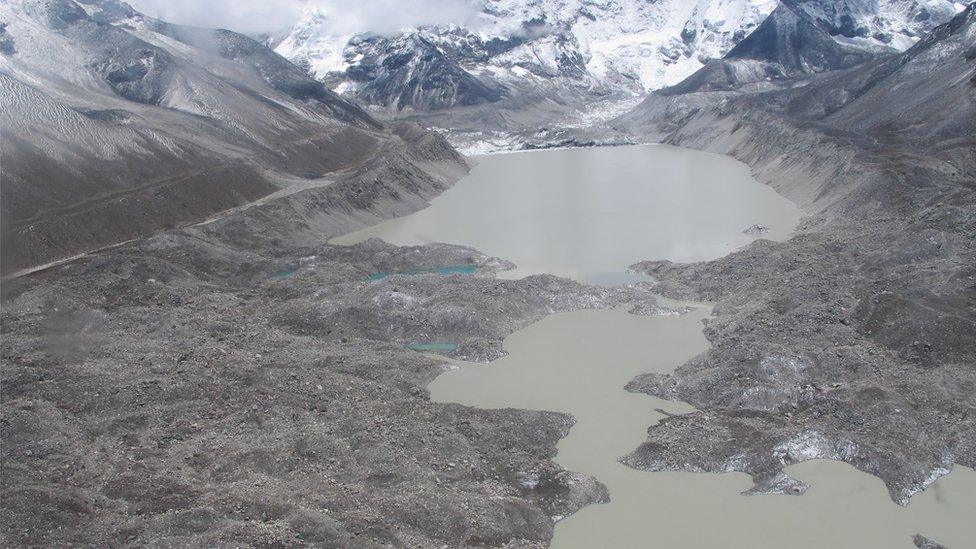
The lake had its water levels lowered by over 3m
Nepal's army says it has finished draining a dangerous glacial lake near Mount Everest to a safe level.
The Imja glacial lake, at nearly 5,000m (16,400ft) high, was in danger of flooding downstream settlements, trekking trails and bridges.
The lake, which was originally 149m deep in places, has had its water levels lowered by 3.4m after months of painstaking work, officials say.
Imja is one of thousands of glacial lakes in the Himalayas.
Many of the lakes are said to be filling up fast because of accelerated melting of glaciers amid rising global temperatures.
Last year's earthquake in Nepal is also feared to have further destabilised Lake Imja.
'Global warming' is behind the flooding of the Imja lake
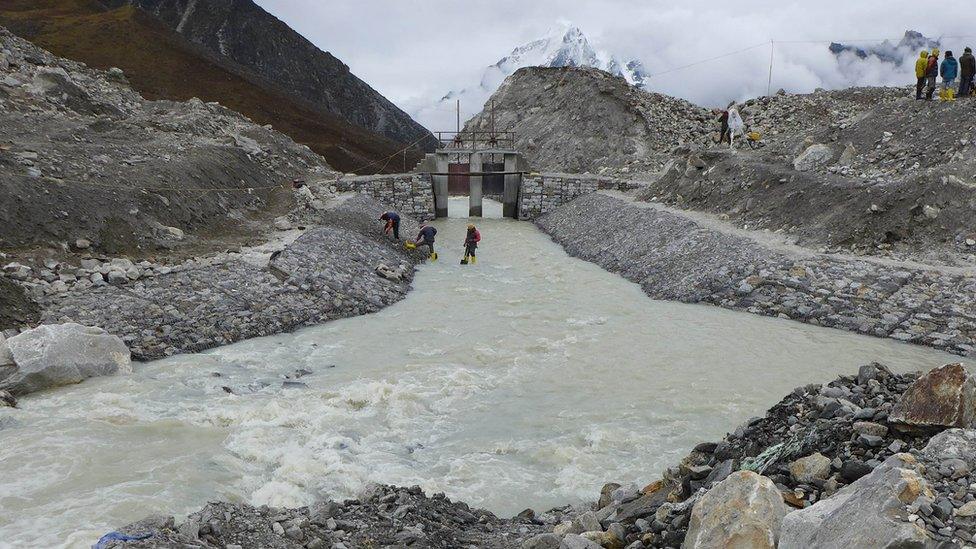
Lake Imja is one of thousands of lakes in the Himalayas
The military said the project to make it safe was the highest drainage project of its kind, with army personnel and Sherpas working for six months to construct an outlet to gradually release the water.
After the outlet was constructed, nearly four million cubic metres of water was released - in a process that took two months.

Top Khatri, the project's manager with the department of hydrology and meteorology, told the BBC the process would now be applied to other lakes.
"It was a pilot project that we completed without any unfortunate incident and now this model will be replicated to reduce risks in other glacial lakes as well," Mr Khatri said.

Teams had to work in tough conditions at high altitudes
The project was also challenging because of the heavy snow and the dangers of working at high altitude.
Officials said teams could only work safely for a few hours each day.
"We suffered from some level of stress and fatigue as we were working at this high altitude and extreme location," Lt-Col Bharat Shrestha, who headed the army team, told the BBC from the Everest region.
"In the beginning, a few people had to be evacuated as they suffered from high altitude sickness but gradually we all acclimatised ourselves to this place."
The draining of the lake is a part of a UN project to help Nepal deal with the impact of climate change. The UN provided nearly $3m in funding to lower the lake's water levels.
Early warning systems have also been installed for communities downstream.
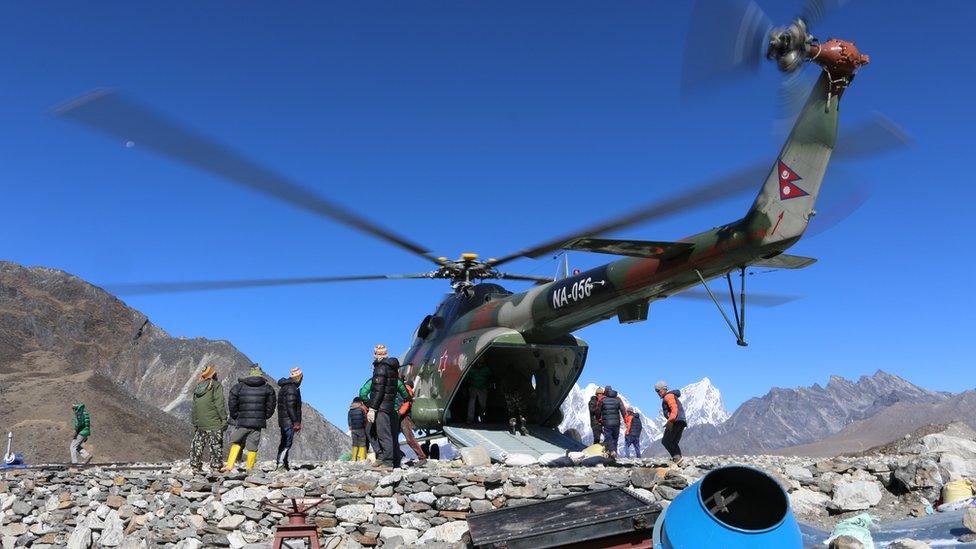
Construction materials were transported by helicopter to nearly 5,000m above sea level
However, many local Sherpas feel too much attention has been given to Imja, with alarmist media reports panicking locals, while the risks posted by other glacial lakes are ignored by officials.
"We live in fear that we might be surprisingly hit by floods from glacial lakes that are becoming dangerous but have not received any attention," said Nimji Sherpa, a leader in Thamo village.
Glacial lakes have broken their banks in Nepal more than 20 times since the early 1960s. Three of those incidents have been in and around the Everest region.
- Published23 May 2016
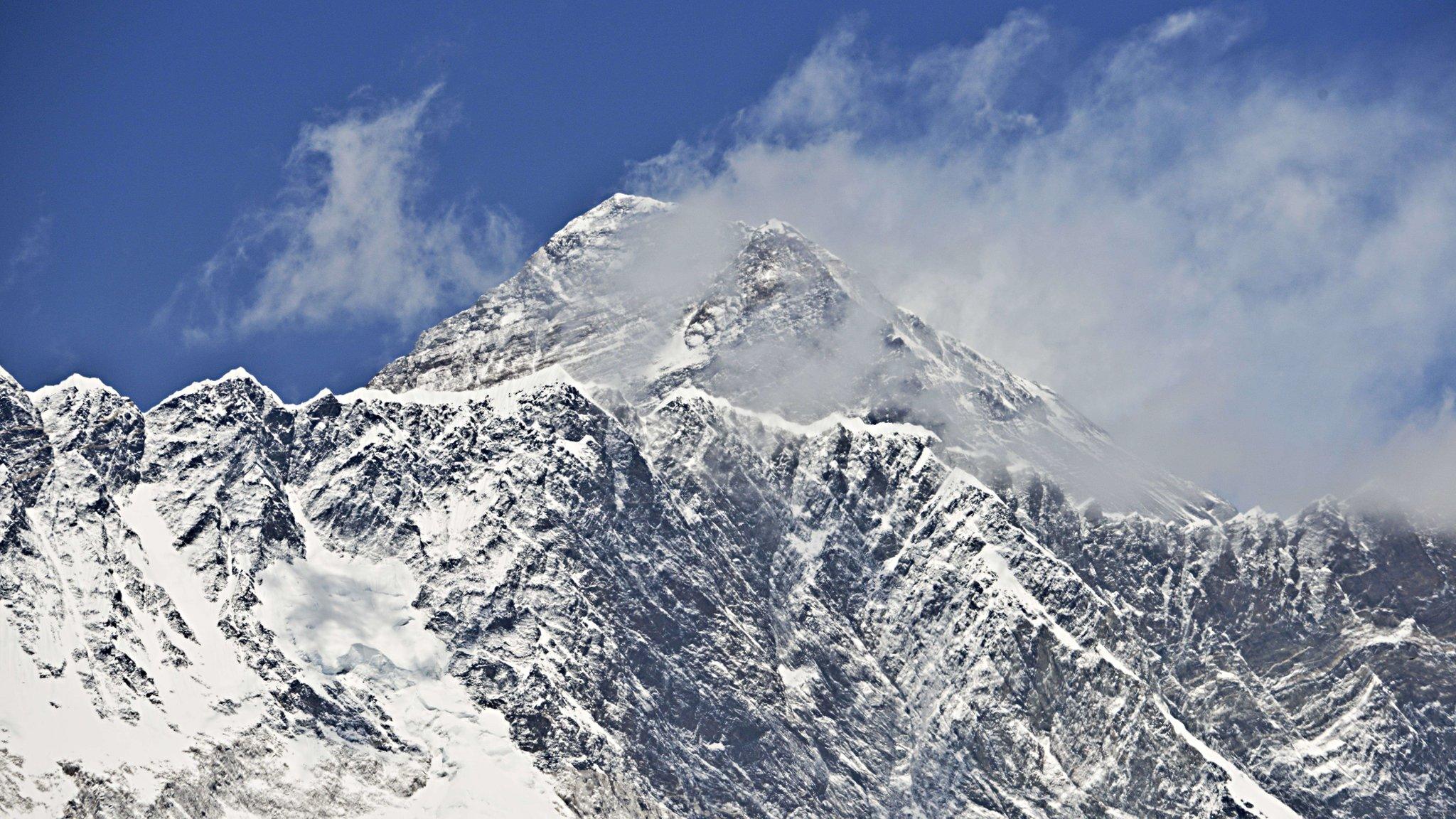
- Published11 May 2016
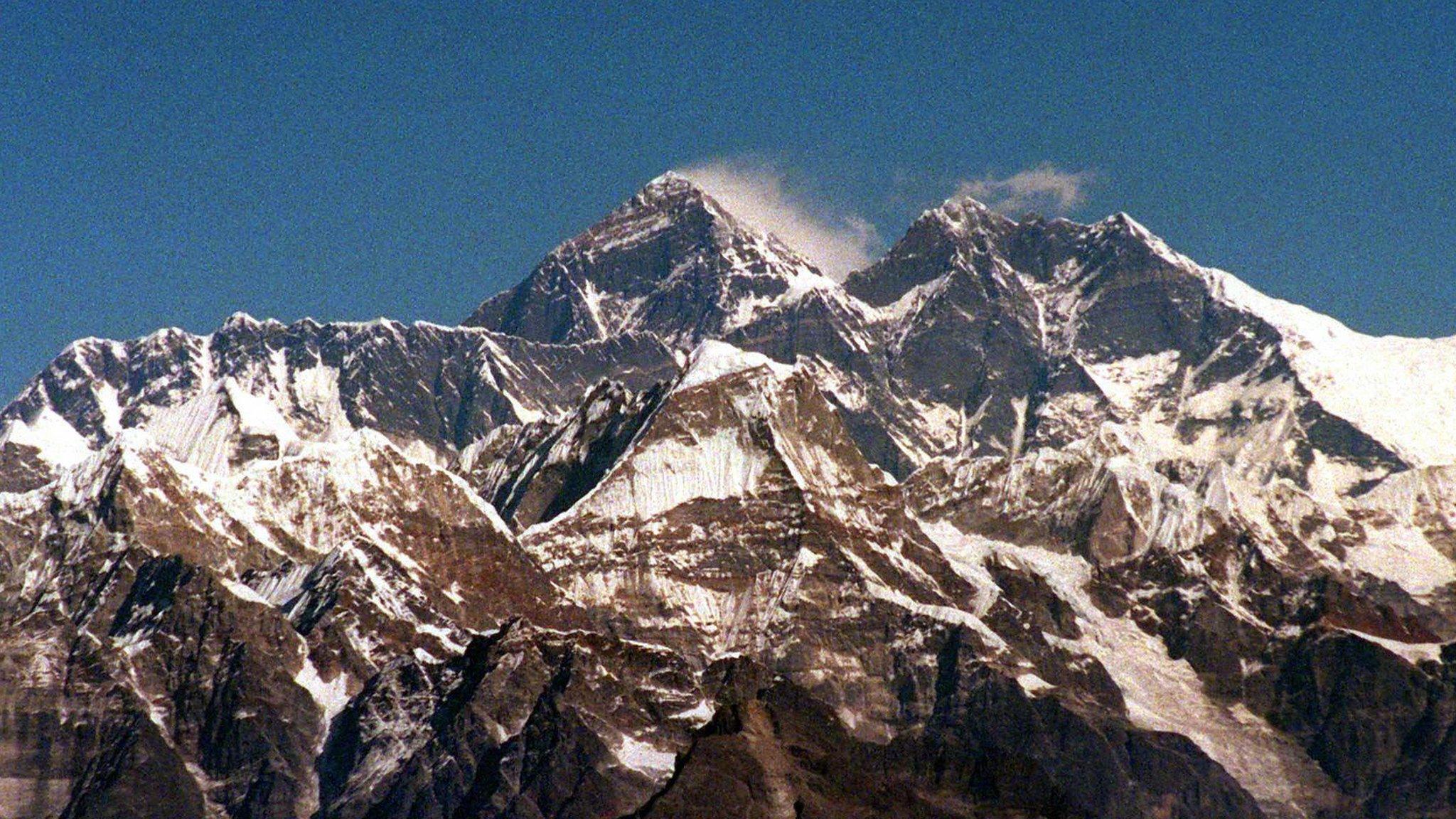
- Published25 April 2016
